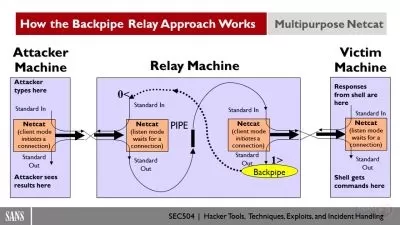Basics of Information Security
Gayathri VM
2:06:10
Description
Threats, Vulnerabilities, Risk Assessment, SecSDLC
What You'll Learn?
- Understand the concepts of Information Security
- Define the importance of Risk Management
- Classify and Identify the threats and Vulnerabilities
- Understand the security approaches and its contributions
Who is this for?
What You Need to Know?
More details
DescriptionThe "Basics of Information Security" course provides a comprehensive introduction to the essential principles and practices that safeguard information systems. The course begins with an overview of the various types of security attacks, such as malware, phishing, and denial-of-service attacks, emphasizing the evolving nature of these threats in the digital age.
Understanding threats and vulnerabilities forms a crucial part of the curriculum, where students learn to identify and assess potential weaknesses within systems that could be exploited by malicious entities. This includes studying common vulnerabilities like software bugs, configuration errors, and human factors that can lead to security breaches.
Risk management is a key component of the course, teaching students how to evaluate and prioritize risks to effectively allocate resources towards mitigating potential threats. This involves learning about risk assessment methodologies and frameworks, as well as practical techniques for implementing risk management strategies.
The course also delves into various safeguard mechanisms, exploring both technical and administrative controls designed to protect information systems. This includes an in-depth look at encryption, firewalls, intrusion detection systems, and access control measures. Students gain hands-on experience in deploying and managing these safeguards to fortify information security.
Security approaches are examined, encompassing both proactive and reactive strategies. Proactive measures focus on prevention and preparedness, while reactive strategies deal with incident response and recovery. The course emphasizes the importance of a balanced security posture, integrating both approaches to create robust defense mechanisms.
By the end of the course, students will have a solid foundation in the principles of information security, equipping them with the knowledge and skills needed to protect information assets in various organizational contexts.
Who this course is for:
- Beginners who are very curious of Security domain
The "Basics of Information Security" course provides a comprehensive introduction to the essential principles and practices that safeguard information systems. The course begins with an overview of the various types of security attacks, such as malware, phishing, and denial-of-service attacks, emphasizing the evolving nature of these threats in the digital age.
Understanding threats and vulnerabilities forms a crucial part of the curriculum, where students learn to identify and assess potential weaknesses within systems that could be exploited by malicious entities. This includes studying common vulnerabilities like software bugs, configuration errors, and human factors that can lead to security breaches.
Risk management is a key component of the course, teaching students how to evaluate and prioritize risks to effectively allocate resources towards mitigating potential threats. This involves learning about risk assessment methodologies and frameworks, as well as practical techniques for implementing risk management strategies.
The course also delves into various safeguard mechanisms, exploring both technical and administrative controls designed to protect information systems. This includes an in-depth look at encryption, firewalls, intrusion detection systems, and access control measures. Students gain hands-on experience in deploying and managing these safeguards to fortify information security.
Security approaches are examined, encompassing both proactive and reactive strategies. Proactive measures focus on prevention and preparedness, while reactive strategies deal with incident response and recovery. The course emphasizes the importance of a balanced security posture, integrating both approaches to create robust defense mechanisms.
By the end of the course, students will have a solid foundation in the principles of information security, equipping them with the knowledge and skills needed to protect information assets in various organizational contexts.
Who this course is for:
- Beginners who are very curious of Security domain
User Reviews
Rating
Gayathri VM
Instructor's Courses
Udemy
View courses Udemy- language english
- Training sessions 5
- duration 2:06:10
- Release Date 2024/07/26










